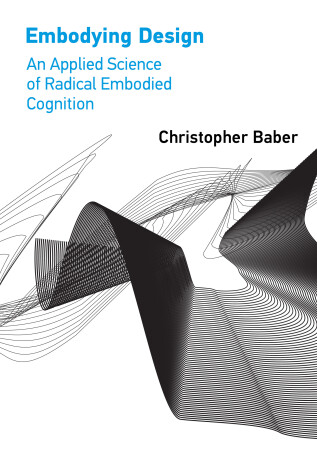Rethinking design through the lens of embodied cognition provides a novel way of understanding human interaction with technology.
In this book, Christopher Baber uses embodied cognition as a lens through which to view both how designers engage in creative practices and how people use designed artifacts. This view of cognition as enactive, embedded, situated, or distributed, without recourse to internal representations, provides a theoretical grounding that makes possible a richer account of human interaction with technology. This understanding of everyday interactions with things in the world reveals opportunities for design to intervene. Moreover, Baber argues, design is an embodied activity in which the continual engagement between designers and their materials is at the heart of design practice.
Baber proposes that design and creativity should be considered in dynamic, rather than discrete, terms and explores “task ecologies”—the concept of environment as it relates to embodied cognition. He uses a theory of affordance as an essential premise for design practice, arguing that affordances are neither form nor function but arise from the dynamics within the human-artifact-environment system. Baber explores agency and intent of smart devices and implications of tangible user interfaces and activity recognition for human-computer interaction. He proposes a systems view of human-artifact-environment interactions—to focus on any one component or pairing misses the subtleties of these interactions. The boundaries between components remain, but the borders that allow exchange of information and action are permeable, which gives rise to synergies and interactions.
- ISBN10 0262543788
- ISBN13 9780262543781
- Publish Date 22 March 2022
- Publish Status Active
- Publish Country US
- Publisher MIT Press Ltd
- Imprint MIT Press
- Format Paperback (US Trade)
- Pages 256
- Language English
- URL https://penguinrandomhouse.com/books/isbn/9780262543781
